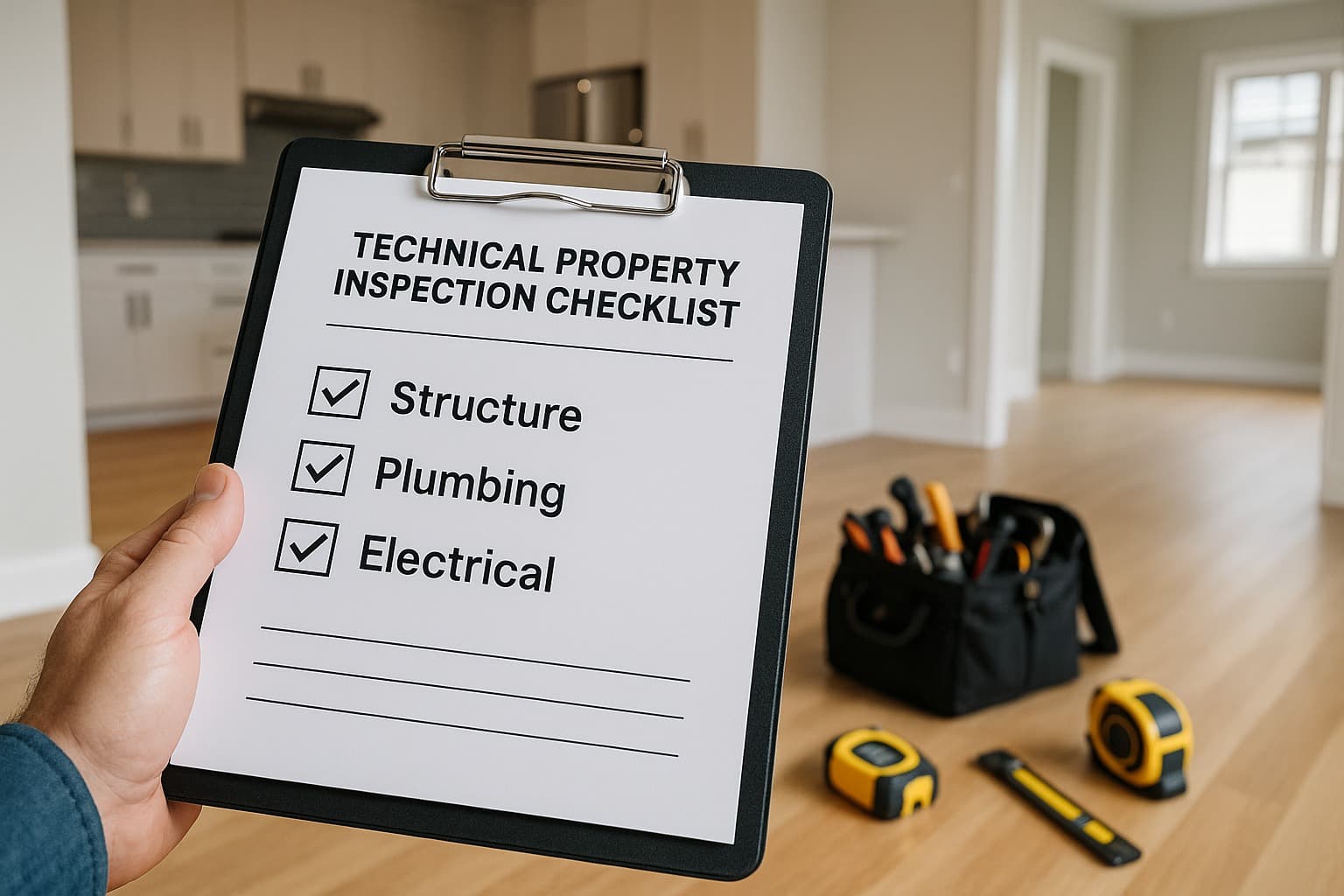How to Compare Property Inspections Before Buying a Home
Summary
Comparing property inspections before buying a home is crucial. This guide outlines steps to effectively evaluate reports, prioritize key factors like safety and legality, and make informed decisions for a secure investment.

How to Compare Property Inspections Before Buying a Home
Buying a home is more than just a financial decision—it’s emotional, life-changing, and sometimes downright stressful. You’re not just investing money; you’re investing your time, your future, and your dreams. And let’s be honest, no one wants to find out a few months later that their “dream home” has hidden cracks, leaky roofs, or legal complications. This is exactly why a property inspection is not optional—it’s essential.
But getting an inspection isn’t enough. If you’re looking at multiple properties, understanding and comparing home inspection reports becomes critical. Without careful comparison, you risk choosing a house that looks good on the surface but could cost you dearly later. Let’s break down how to compare property inspections effectively, step by step.
Why Property Inspections Matter More Than You Think
Imagine this: you walk into a house, the sun is streaming in, the kitchen looks perfect, and the garden is beautiful. You can already picture your life there. But beneath that beautiful surface, the walls may hide cracks, the plumbing could be outdated, and termites might be slowly eating away the wooden structures.
A thorough real estate evaluation catches these hidden issues. A proper structural audit and house quality check ensure that what you see is really what you’re getting. It’s about protecting yourself, your family, and your wallet. After all, buying a home is often the biggest financial commitment most of us make in our lives.
Step 1: Get a Detailed Property Inspection
The first step is simple: hire a reliable home inspection service. But not all inspections are created equal. A good inspector will go beyond the obvious, checking:
Structure: Foundation, walls, beams, and roofing.
Electrical systems: Wiring, sockets, circuit breakers.
Plumbing: Pipes, drains, water pressure, sewage lines.
Pest control: Termites, rodents, dampness issues.
Legal compliance: Land titles, approvals, zoning, and RERA registration.
Think of it as a doctor doing a full-body checkup. You want someone who looks at every detail, not just the parts you can see with your eyes.

Step 2: Use a Property Inspection Checklist
When you have multiple properties in mind, using a property inspection checklist in India can be a lifesaver. It standardizes your evaluation so you can compare apples to apples. A checklist should include:
Structural integrity: Cracks, water damage, foundation stability.
Roof and flooring: Leaks, tiles, waterproofing.
Electrical systems: Wiring safety, switches, and circuit reliability.
Plumbing and sanitation: Pipes, drainage, water pressure, and water quality.
Pests: Signs of termites, rodents, or mold.
Safety features: Smoke detectors, fire safety, emergency exits.
Legal compliance: Approvals, clear titles, RERA registration.
A checklist turns subjective impressions into tangible data, making comparison much easier.
Step 3: Understand the Home Inspection Report
When you receive a home inspection report, take time to understand it. Many buyers glance over the findings and assume minor issues are unimportant. Here’s what to focus on:
Severity of issues: Cosmetic defects like chipped paint are easier to fix than foundational cracks.
Cost estimates: Some inspectors provide repair cost estimates, which help in budgeting.
Visual documentation: Photos, diagrams, and notes can clarify the issues better than text alone.
Recommendations: Inspectors should suggest next steps or immediate repairs.
A good report tells a story—it explains what is happening, why it matters, and what you need to do next.
Step 4: Compare Multiple Properties Systematically
If you’re considering several homes, a home inspection comparison for multiple properties is invaluable. Here’s a practical approach:
Create a scoring system: Assign points to structural integrity, plumbing, electrical safety, and legal compliance.
Weigh critical factors more heavily: Foundation and legal issues should carry more weight than cosmetic flaws.
Consider future maintenance costs: A home with fewer defects often saves time, money, and stress in the long run.
Identify deal breakers: Safety, legal, and structural problems should be non-negotiable.
This structured approach helps you separate emotion from logic. It’s tempting to fall in love with a property because of its view or interior, but a systematic comparison ensures you make the right long-term investment.
Step 5: Seek Expert Opinions
Sometimes inspection reports are technical and hard to interpret. Don’t hesitate to consult:
Structural engineers for serious cracks or foundation issues
Electricians or plumbers for complex systems
Legal advisors for document verification

Experts can confirm your findings and offer additional insights. This extra step ensures you’re not blindsided later.
Step 6: Prioritize What Truly Matters
When comparing property inspections before finalizing a home, focus on what really matters:
Safety: Structural soundness, electrical systems, fire hazards.
Legality: Clear land titles, proper approvals, RERA registration.
Cost-effectiveness: Future repairs and maintenance.
Resale value: Homes in better condition maintain value over time.
A minor cosmetic flaw shouldn’t outweigh a major structural problem. Keep your priorities straight.
Tips for Making Property Inspection Comparisons Work for You
Always hire verified and certified inspectors.
Take your time reviewing reports; rushing leads to mistakes.
Use a spreadsheet or table to organize findings for each property.
Ask inspectors to clarify technical jargon.
Treat inspection results as leverage for negotiations—sometimes repair costs can be factored into your offer.
Remember, inspections aren’t just paperwork—they’re your shield against unforeseen expenses and stress.
The Human Side of Home Buying
Buying a home isn’t just about checklists and reports. It’s about imagining your life in that space—morning coffee on the balcony, laughter in the living room, kids running in the garden. A good property inspection helps ensure that the space you fall in love with is safe, legal, and structurally sound. The right home inspection process isn’t just about finding flaws—it’s about protecting your dreams.
Conclusion
Comparing property inspections is one of the smartest things a homebuyer can do. With detailed checklists, thorough understanding of inspection reports, expert opinions, and structured comparisons, you can confidently choose the right property. Whether it’s a structural audit, home inspection report, or house quality check, careful evaluation ensures you’re investing in a home that’s safe, legally compliant, and worth every rupee. Remember: your home is more than bricks and walls—it’s your future, and inspections protect it.
100-Word Summary
A detailed property inspection is essential before buying any home. Comparing home inspection reports across multiple properties uncovers structural, electrical, plumbing, pest, and legal issues. Using a property inspection checklist in India and assigning scores helps objectively evaluate homes. Consult experts for complex findings, prioritize safety and legality, and weigh long-term maintenance costs. Proper comparison ensures informed decisions, protects your investment, and reduces stress. A thorough real estate evaluation transforms the home-buying process from overwhelming to confident, ensuring that your new home is not only beautiful but safe, legally compliant, and ready for the memories you’ll create.
